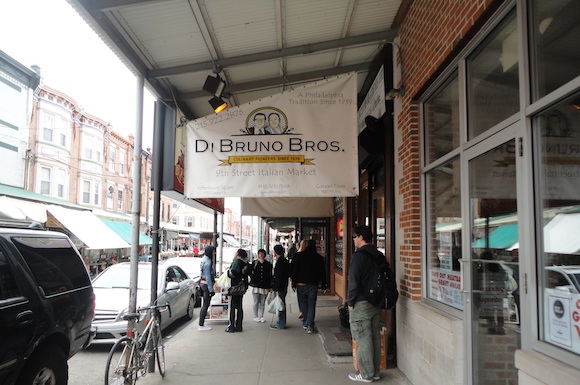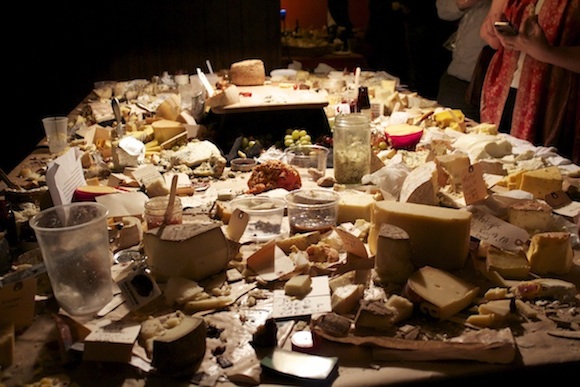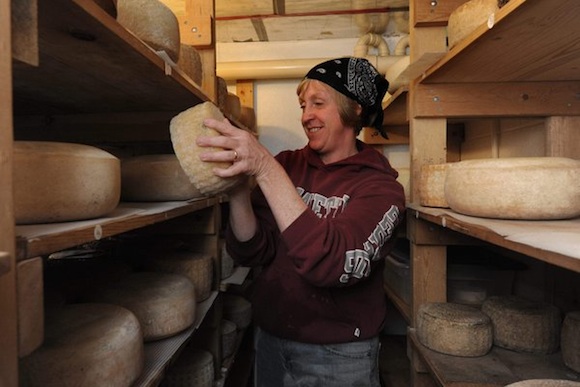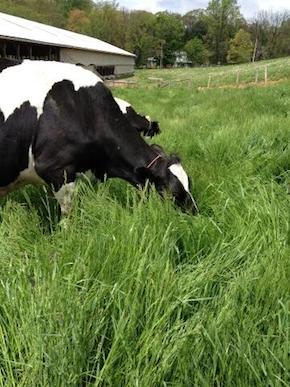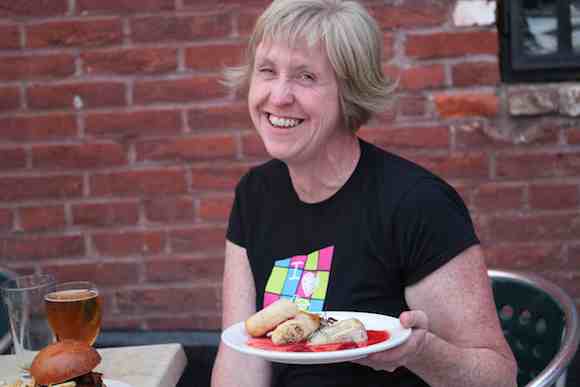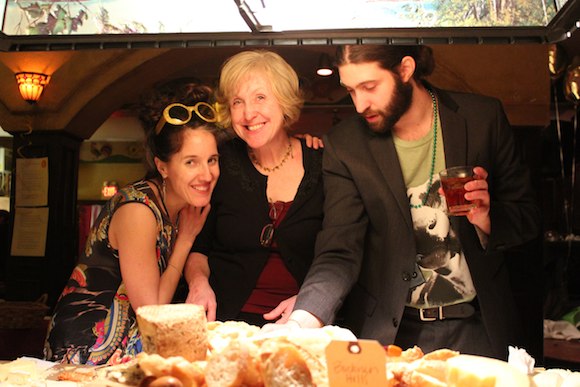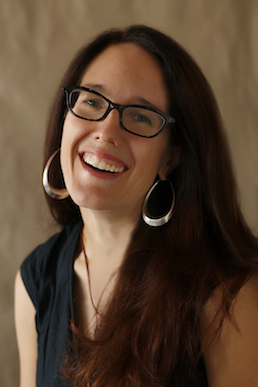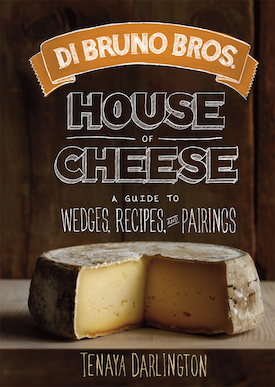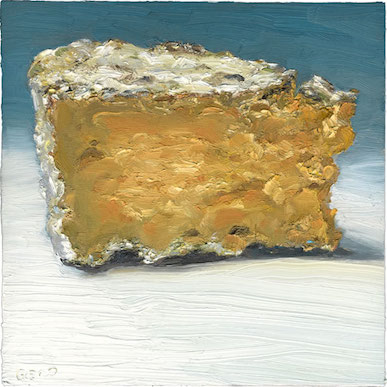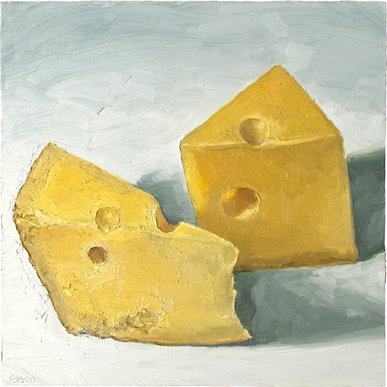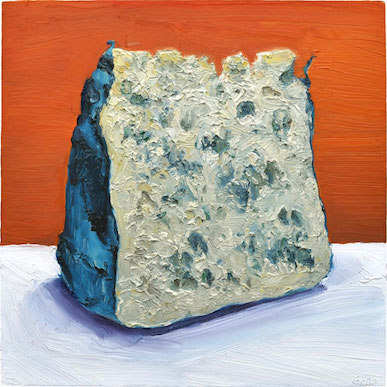It's an unbearably frigid January evening in Philadelphia, but inside a century-old social club in the city's trendy Northern Liberties neighborhood, 370 people have gathered to eat cheese.
“The Cheese Ball” is a semi-annual social gala now in its second year. For Southeastern Pennsylvania's tight-knit community of foodies and dairy obsessives — those who not only consume massive amounts of artisanal and handcrafted cheese, but also love to talk about it, read about it, and sometimes even plan vacations around it — this is undoubtedly the event of the season.
Though it is the nation's fourth-largest dairy-producing state, Pennsylvania is not one of the country's leading cheese producers — artisanal or otherwise. (That honor goes to Wisconsin and California.) That said, the Commonwealth's 21st-century specialty cheese culture is surprisingly vibrant, and it's growing fast. Passionate dairy farmers and skilled cheesemakers ply their trades throughout the state, while the food education and farm-to-table movements make significant in-roads, especially in urban areas. As that tide rises, it lifts all boats.
There are writers and artists in Philadelphia, in fact, who have created entire careers as a result of the artisanal cheese trend. There are university-level culinary instructors who regularly school their students on the importance of a proper cheese education. And throughout the region, there are scores of professional cheesemongers working behind counters who possess an encyclopedic knowledge of all things stinky, waxy and gooey.
And then there are the rural dairy farmers and cheesemakers themselves, including pioneers who have toiled for years at the nexus of an industry now said to be worth some $14 billion in the United States alone.
The cheese mother of Chester County
Working out of Birchrun Hills Farm in Chester County, Sue Miller is one such cheesemaker. Miller and her family ran a relatively simple operation when they first began farming, selling the milk from their 80-some Holstein cows to dairy concerns such as Land O'Lakes. But then came the 2008 financial crisis, which had an especially crippling effect on the agriculture industry. Dairy farmers in particular were hit hard when the bottom fell out of the commodity fluid milk market (which is based on the price of cheese and traded on the Chicago Mercantile Exchange).
Almost overnight, it became nearly impossible for Miller and her family — and other small-scale farmers like them — to make a profit off their milk.
“We were really challenged to be able to make ends meet,” says Miller. “Scale was hard, because we were a small farm. And we didn't have any equity in our land, because we were first generation farmers. So we were searching for something we could do that would add value to our milk.”
One morning, after a restless night's sleep, it came to her. “I woke up and thought, 'I'm going to learn how to make cheese,'” she recalls. “It was just as simple as that.”
Miller connected with the Pennsylvania Association for Sustainable Agriculture (PASA), which at the time was offering a two-day cheesemaking class taught by Peter Dixon. A legendary figure in the artisan cheese world, Dixon makes Italian-inspired raw milk cheeses at Parish Hill Creamery in Vermont.
But to her dismay, Dixon's class was already at capacity by the time Miller called. “I actually begged my way in,” she remembers. “I said, 'Listen, you have to let me in — the future of my farm depends on it!'”
The ploy worked, and after discovering that a neighboring farm had a 25-year-old cheesemaking facility it wasn't using, Miller and her family rented the space for their new endeavor.
In the years since, Miller has become a local legend in her own right, producing beloved cheeses such as Fat Cat (a washed-rind charmer) and Birchrun Blue (the farm's flagship cheese). Peter Dixon eventually became her trusted mentor, and after marrying a close friend of Miller's, a de-facto member of the family as well.
Today, Miller is considered the “mother” of the Chester County Cheese Artisans, a group of eight farmstead and artisanal cheesemakers who support each other both personally and professionally, and whose products can be found everywhere from Philadelphia's Reading Terminal Market to upscale restaurants like Talula's Table in Kennett Square.
Philadelphia's first lady of fromage
Around the same time Miller was beginning to realize that handcrafted cheese could make a tidy profit for her struggling dairy farm, a growing cadre of young urban foodies throughout the state — and across the country — had begun to discover the benefits of locally-sourced, artisanal food. Whether it was bread or beer, chocolate or coffee, the small-batch craft food movement was in full swing.
Consider, for instance, Tenaya Darlington, aka Madame Fromage.
A little over a decade ago, when she was in her twenties, Darlington worked as the food editor at Isthmus, an alternative newsweekly in Madison, Wisconsin.
“This was at a time when, in Wisconsin, the artisan cheese scene was just beginning to sprout,” she explains.
Darlington grew up surrounded by interesting and imported cheeses. Because her mother is Swiss, she and her brother “were always the kids at school who had stinky cheese in their lunches,” she says. “We didn't have Kraft singles. We ate Alpine-style cheeses, because to my mom, that was a taste of home.”
Despite her cultured upbringing, it wasn't until Darlington relocated to Philadelphia, where she'd accepted a position in the English department at Saint Joseph's University, that her very name became synonymous with artisanal cheese.
Today, Darlington hosts the occasional high-end cheese-themed soiree, and seems to have a personal relationship with every cow, goat and sheep farmer within a 50-mile radius of her Philadelphia home. In addition to her personal blog, she covers the local cheese community for publications ranging from The Philadelphia Inquirer to Culture, a slick consumer magazine devoted entirely to the love of cheese.
In summer 2013, Running Press published Di Bruno Bros. House of Cheese: A Guide to Wedges, Recipes, and Pairings. The 300-page tome was the result of Darlington's years-long obsession with the world-famous — and famously tiny — Italian Market shop.
And yet when Darlington first came to Philadelphia, she didn't know a soul. She had just one connection to home: the address of a South Philly cheese spot, which had been given to her by a friend back in Madison. “When you want to get your cheese on,” her friend had promised, “this is where you're going to want to go.”
That place, of course, was Di Bruno Bros on South 9th Street. During her first visit, feeling a bit homesick, Darlington asked for a rare Wisconsin cheese known as Uplands Pleasant Ridge Reserve. “It's a true geek's cheese,” she says. “And they had it.”
The shop's cheesemongers were just as delighted by the new obsessive in their midst. “I stuck around for about two hours and just tasted amazing cheeses with the guys behind the counter,” recalls Darlington. “It was a revelation to me. I didn't know anybody with that kind of expertise back in Wisconsin.”
That afternoon adventure soon turned into a weekly ritual, and eventually Darlington began embarking on “cheese treks” — citywide hunts for new artisan cheeses — with her friend Mike Geno.
Geno is a Philadelphia painter and art instructor who became something of a lacti-celeb himself in 2012, when the novelist Jeff Gordinier profiled his lifelike pop-art paintings of handcrafted cheese in The New York Times.
Appropriately enough, Geno and Darlington met at a potluck dinner hosted by a local food blogger. “It was pretty much love at first sight,” recalls Geno. “If she was single and if I was straight, well, we would have gotten married. It was pretty clear we could talk forever about food.”
Geno was already a fairly accomplished food painter when he discovered cheese; he'd painted everything from sushi and bacon to doughnuts and hot dogs. His first “cheese portrait” occurred almost by accident, after a friend gave him a Di Bruno Bros. gift certificate as a birthday present.
“[Di Bruno Bros.] is really perfect for everybody,” Geno says. “When you go there, they can talk to beginners or experts. They're just awesome.” Eventually, he left with a chuck of Gorwydd Caerphilly, an award-winning Welsh cheese. “And when I came home, I was like, 'I can't just eat this; I need to paint it. It looks too good.' It was the first thing that made me salivate for the idea of painting, and I hadn't felt that all year.”
Geno and his unusually captivating food art have since been documented in scores of magazines and newspapers. His paintings sell for upwards of $700, though they tend to be snapped up so quickly that fans often have to settle for $50 matted prints. (An oil painting of a bright-orange wedge of Gouda, part of a series called “Kings of Cheeses,” is currently priced at $3,000.)
Geno even has his own literary agent, and is in talks to publish a book of his portraits featuring copy penned by Darlington.
A powerful culture
Fostering an industry that can support writers and artists alongside farmers and cheesemakers requires an especially strong community. In fact, this year's Cheese Ball (organized by Darlington) wasn't simply a social affair — it was also a fundraiser for Birchrun Hills Farm. Roughly $5,000 was raised for Miller and her family, who have plans to construct an onsite cheese-aging room, or “cheese cave.” They expect the project to run them upwards of $300,000.
Later this fall, Miller and her family will launch a $50,000 Kickstarter campaign. Rewards for the campaign's backers will likely include a mix of experiential rewards — cheese-making classes, for instance, and on-farm dinners and tours.
Mike Geno points out that one reason the cheese faction here continues to thrive is “because the people who are so dedicated to making it and selling it are farmers, or cheesemongers who aren't making a lot of money.” It's a community based upon a bedrock of passion, in other words, not necessarily financial gain.
Then again, that also makes the industry susceptible to broader economic trends. “On dairy farms, generally people are thinking this is the last generation,” explains Miller. Many agriculture experts, she says, don't expect young people to be interested in toiling so hard for such a small slice of the economic pie, as she and so many of her contemporaries have.
And yet Miller's own sons have bucked that trend. Her eldest son, now a year out of Cornell University, recently returned to the farm to join the family business. Her youngest, a Cornell junior, has also shown interest in a Birchrun Hills career.
“I think that's really a tell-tale sign that this next generation does see a future in agriculture,” says Miller. “That's really exciting.”
Over at Drexel University in West Philadelphia, Mike Traud shares Miller's outlook. A former chef at noted Philly restaurants such as Osteria and Vetri Ristorante, Traud is now the director of Drexel's Hospitality and Tourism department, where culinary students are introduced to the finer points of artisan and specialty cheese.
Traud often invites regional cheesemakers to visit his program's classes. Drexel's introduction of a specialty dairy education to its culinary department seemed a natural progression from the self-education seeping into every corner of the Greater Philadelphia food scene.
“When you have these artisan cheesemakers come in, the students see the passion they put out for their product,” says Traud. “It only naturally gets them more excited about what people are doing out there.”
So where exactly is Pennsylvania's artisan cheese scene headed? Local expert Paul Lawler, who has various cheesemonger stints on his resume and now works as a cheesemaker at the celebrated Cherry Grove Farm in New Jersey, probably explains it best.
“When I first got involved with local cheese [in 2006], [it] took up like four inches on a flat shelf,” he says. “Come 2011, there was a proper cheese case to curate, something I emphasize because there [is now] enough of any variety of artisan cheese that one can be choosy. Not just chèvre and Baby Swiss, but a multitude of Alpine styles, punchy washed rinds, and idiosyncratic cave-aged beauties. That's marvelously quick growth.”
DAN ELDRIDGE is news editor at Flying Kite Media and the author of Moon Pittsburgh (Avalon Travel). His work has appeared in The New York Times, Columbia Journalism Review, and The Daily Telegraph. Follow him on Twitter at @YoungPioneers.
↑ Top
